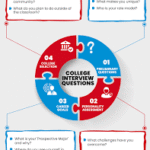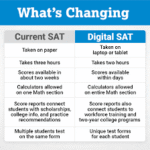Planning to study in the United States? That’s an exciting goal! If you haven’t done this before, finding your way through the US college application process might seem challenging. Don’t worry. With this guide, taking academic actions becomes manageable and will help you see how possible it is to attend college.
Step 1: Explore Your Options and Make a College List
Before getting started with specific programs, it helps to check out what’s available. You will find colleges and universities in the US that are big, small, public, and private and located in cities or rural towns.
Here’s what to think about:
* What major or field are you interested in?
* Do you want a large or small campus?
* What’s your budget, and what financial aid options are available?
* Are you aiming for top-ranked schools or affordable ones with good support?
Use websites like College Board, Niche, and US News to compare colleges. Choose between 5 and 10 schools that seem a good option for you.
Step 2: Get Familiar with Admission Requirements

Most colleges have a different application process but usually ask for:
* High school transcripts (translated to English if needed)
* Test scores (SAT/ACT — many colleges are now test-optional)
* English language test scores (TOEFL, IELTS, or Duolingo)
* **Recommendation letters
* A personal essay or statement
* A completed application form (via Common App, Coalition App, or the college website)
Visit each college’s website for exact details. Working from a schedule for all your colleges will make visits less stressful and more efficient.
Step 3: Take Required Tests (If Needed)
Not every school checks test scores now, but some still do, so keep reading to know what to submit.
* SAT or ACT for undergraduate admission
* TOEFL, IELTS, or Duolingo English Test for non-native English speakers
Make sure to sign up for your exams early and spend time using the many free online or book resources available.
Step 4: Craft a Personal Essay That Speaks From the Heart
Regard your essay as a way to introduce yourself beyond the numbers on your transcript or test scores.
Tips for a strong essay:
* Choose a topic that reflects you—your journey, dreams, or challenges.
* Be honest, clear, and genuine.
* Stick to the word limit and get feedback from a teacher or mentor.
If the college uses the Common App, you’ll find a variety of prompts to choose from. Some schools may ask for extra short essays too.
Step 5: Collect Letters of Recommendation

Teachers, school counselors, or coaches should tell colleges how you have improved and changed since middle school.
Here’s how to approach them:
* Ask politely and early (at least 3–4 weeks in advance).
* Share your achievements and the colleges you’re applying to.
* Say thank you afterward—it matters!
The majority of schools will need at least 2 and up to 3 letters of recommendation.
Step 6: Fill Out and Submit Your Applications
When you’re ready, it’s time to start submitting! Most colleges use :
* Common App—used by over 1,000 US colleges
* Coalition App– an alternative platform
* College websites—for direct applications
You’ll usually upload:
* Academic documents
* Test scores
* Your personal essay
* Pay an application fee (some offer fee waivers)
Double-check everything before hitting “submit”!
Step 7: Stay on Top of Deadlines
US colleges follow different application cycles:
* Early Action (Apply early, no commitment
*Early Decision (Apply early wit commitment
* Regular Decision—Most common, usually due Jan–Feb
* Rolling Admissions—Reviewed as they come in
Use a spreadsheet or an app to help you remember all your points.
Step 8: Apply for Scholarships and Financial Aid
College is often expensive, but keep in mind you can get help in many different forms.
* US citizens can apply through FAFSA (Free Application for Federal Student Aid)
* International students can look for scholarships on college websites or through platforms like *Scholarships.com and IEFA.org
* Some schools also ask for the CSS Profile
Don’t wait too long, because some scholarships close well ahead of other deadlines.
Step 9: Wait (Patiently) for Admission Decisions
After applying, take a deep breath. Most decisions are sent via email or college portals. Here’s what you might hear:
*Accepted—Congratulations!
* Waitlisted—You may get in if spots open up
Rejected—It happens, but don’t be discouraged
Use this period to check out life on campus, reach out to students already there, or schedule a tour if one is allowed.
Step 10: Accept, Prepare, and Apply for a Visa
If you’re accepted and ready to enroll:
1. Accept the offer and pay your enrollment deposit.
2. The college will send you a Form I-20.
3. Apply for your F-1 student visa at the US embassy.
4. Prepare for your visa interview and book your travel.
It’s official—you’re on your way to becoming a US college student!
Final Words
Applying to US colleges doesn’t have to be stressful. Having a strong plan and some patience will help you achieve what you want to do. Work on it little by little, reach out if you’re unsure, and stay motivated by your goal.








